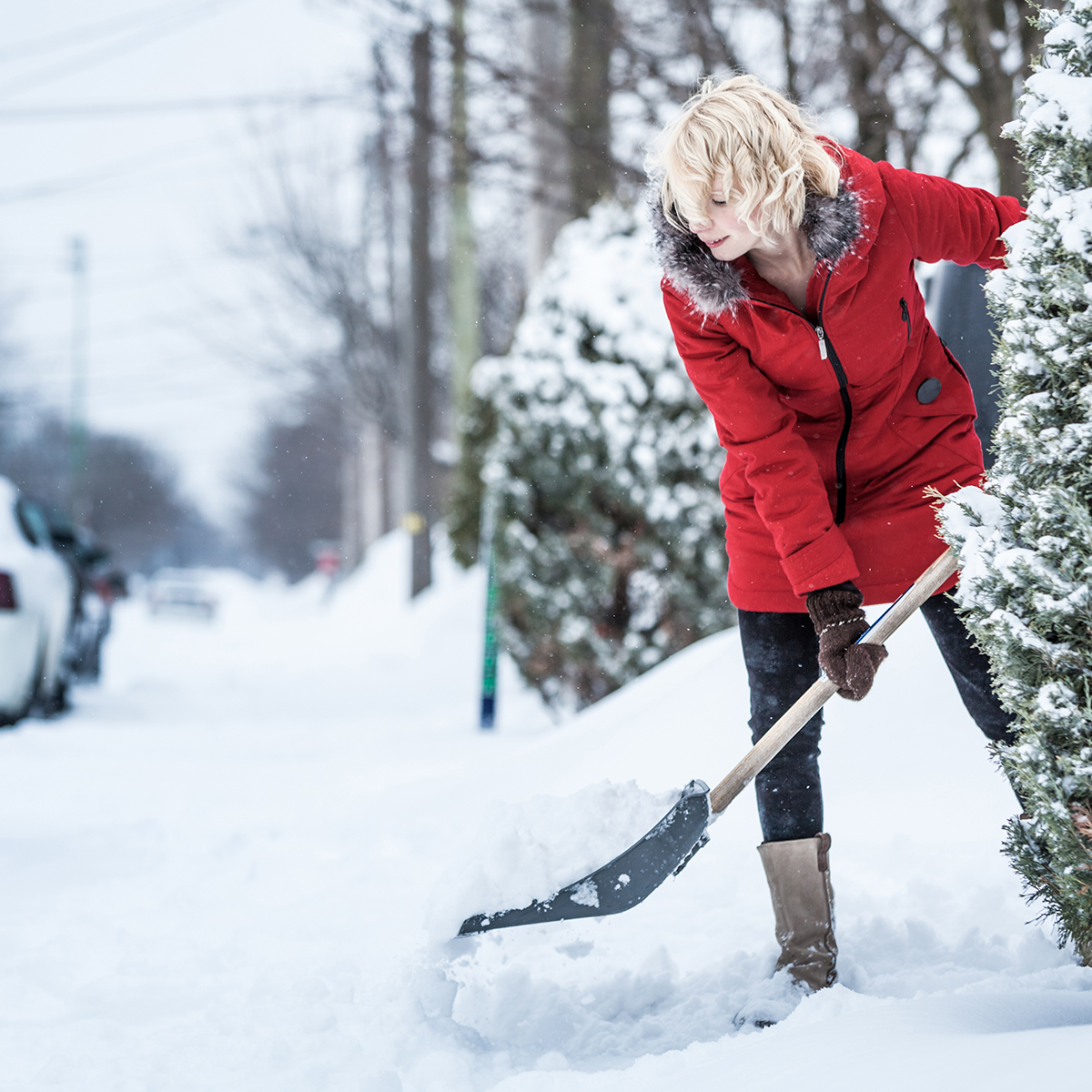Table of Contents
In Northern Virginia, we love a good snowfall. Heavy snows are usually rare enough to be fun and exciting for most folks in the Mid-Atlantic. But snow means shoveling to keep walkways clear. You might be surprised at the number of snow shoveling injuries reported each year. But there are ways to shovel safely and reduce the risk of getting hurt.
What Are Common Snow Shoveling Injuries?
 A 2011 study in the American Journal of Emergency Medicine showed that Americans report more than 11,000 snow shoveling injuries each year. Most are related to overexertion, while others are related to slips and falls. And a smaller percentage of injuries are related to getting hit with a shovel (yes, that happens). Soft tissue injuries are most common, including strains to muscles, ligaments and tendons. Of these, injuries to the lower back make up more than a third of cases. We also see broken bones, with the hands and arms most at-risk. Snow shoveling also presents a heart attack risk, especially if you’re over 55.
A 2011 study in the American Journal of Emergency Medicine showed that Americans report more than 11,000 snow shoveling injuries each year. Most are related to overexertion, while others are related to slips and falls. And a smaller percentage of injuries are related to getting hit with a shovel (yes, that happens). Soft tissue injuries are most common, including strains to muscles, ligaments and tendons. Of these, injuries to the lower back make up more than a third of cases. We also see broken bones, with the hands and arms most at-risk. Snow shoveling also presents a heart attack risk, especially if you’re over 55.
How Can I Avoid Injury While Shoveling Snow?
Think of shoveling snow as intense exercise, with lots of heavy lifting. Some of the precautions we take to exercise safely can also apply. Here are some tips for shoveling safely:
- Warm-up your muscles with dynamic stretching and movement like walking or marching in place. Be sure to stretch your hamstrings and lower back with gentle stretching exercises since they often bear the brunt of exertion-related stress.
- Use correct shoveling technique. As with other lifting exercises, using your legs and not your back is essential. The American Academy of Orthopaedic Surgeons offers some tips for shoveling style:
- Push the snow instead of lifting it when possible.
- When lifting snow, squat with your legs apart, knees bent and back straight, and lift with your legs.
- Scoop small amounts of snow and then walk to where you want to dump it instead of working with arms outstretched.
- Don’t throw snow over your shoulder since it requires a twisting motion that stresses your back.
- Use the right shovel. Newer ergonomic shovels can reduce the risk of injury (and make shoveling easier). Look for a curved or adjustable handle and a lightweight plastic blade.
- Pace yourself and take breaks when needed. Shop shoveling if you feel pain.
Here are a few more great tips from AAOS for safe and comfortable shoveling:
- Dress appropriately: light, layered water-resistant clothing provides both insulation and ventilation. Wear shoes or boots with slip-resistant soles to avoid falls.
- Clear snow early and often as it falls to avoid large amounts after a heavy snowfall.
- Drink plenty of water to stay hydrated.
- Check with your doctor if you have a medical history that might make shoveling dangerous.
What If I Get Injured While Shoveling Snow?
If you experience a strain while shoveling, ice the affected area to prevent swelling. You can also take an over-the-counter anti-inflammatory medication like ibuprofen. If pain continues, make an appointment with your orthopaedist. We’ll assess the injury and order imaging as needed. If you have a soft tissue strain or injury, physical therapy is often the recommended approach. A high-quality PT program can help you build strength and regain mobility. Treatment for lower back injuries includes developing core strength to protect the back. You’ll also develop strategies for returning to activities safely.